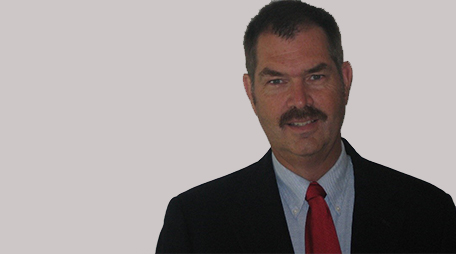 Member Spotlight: Tom Staal
Member Spotlight: Tom Staal

Tom Staal
Professional Member
Holland, MI
For Tom Staal, being nominated to appear in TAPPI’s Spotlight came as a surprise. “I’m just a boring part of a box making team,” he quipped upon learning he was to be highlighted. But this modest Michigan Technological University alum is much more than just a team member.
As Corporate Quality Manager for Advance Packaging Corporation, he’s responsible for the company’s quality management systems and its Materials Testing Laboratory. Advanced Packaging is a full-service packaging provider, and they keep Tom and his crew busy looking for solutions that lead to better, faster and more effective ways of doing business.
Tom’s growth in the corrugated industry took off when his company invested in his professional training during an international containers conference. Tom maximized the opportunity by attending every session, committee meeting and networking function he could. Management was expecting a summary of what he learned; instead they got much more. “It was such a great learning opportunity for me to see more than just my small world at the corrugator that I came back and wrote something like a 14-page report,” he said.
This conference experience (much like CorrWeek provides today) helped broaden Tom’s perspective on the industry and attending it was a huge eye opener. The production roundtable, technical sessions, and the ability to see different technologies that could be applied to processes he was responsible for, exposed him to new ideas and potential solutions to daily issues. The sessions also gave him a better understanding of how his processes impacted others.
Since his early conference experiences, and as a leader at Advanced Packaging, Tom is always looking at professional development opportunities for his production team members. “It is so important that they learn why we do things rather than just what to do. These training opportunities help develop that understanding,” he emphasized.
As an active TAPPI member, Tom serves on the Fiberboard Shipping Container Testing Committee (FISCOTEC) as well as the Corrugated Board Technical Service Committee (CORBOTEC). He was honored about eight years ago by peers who asked him to serve on the leadership team of FISCOTEC. He spent six years in various positions, serving two as the committee chair. While chair, he was also appointed to the Scholarship and Awards Committee and the Quality Standards Management Committee. Most recently, Tom was elected to the Corrugated Packaging Council.
In addition, Tom has also participated in numerous test method reviews and is a member of a number of Standard-Specific Interest Group (SSIG). SSIGs review and vote on test methods as they come up for ballot.
Q. How has TAPPI membership helped you in your career pursuits?
A. Attending TAPPI meetings, conferences and events gave me an opportunity to meet other people who did the same thing as I did, and I also met people who knew a lot more. It has helped build a network of technical resources to call on to discuss ideas and/or challenges.
Q. Tell us about some of your interests outside of TAPPI and your professional life.
A. I’ve spent many years as a leader in our church’s boy’s club. Currently, I am involved as a parent helper on my son’s first robotics team.
My wife and I enjoy the outdoors and exploring. We use a billion dollar satellite network to navigate to specific locations as part of a worldwide game of hide and seek called geocaching. We have found close to 8,000 geocaches and have hidden close to 200 individually as part of groups. We often post our finds to the “official” geocaching website. (Tom is pictured at right holding his latest micro geocache find).
Q, Please provide a few thoughts on what you believe have been the most significant contributions/breakthroughs in areas of our industry? Also, what is your favorite paper or packaging product?
A. The cool thing about this industry is that we are living in a “continual improvement environment.” Even though on the surface the product appears to be the same, there are huge changes behind the scene.
When I first came into the industry we were on the bleeding edge of the performance paper movement with containerboard and the move from the Mullen-based BMC to the ECT alternative. The formalization of that change was huge and spurred innovation and creativity in the papermaking community, allowing box makers to make paper combination changes and be more efficient with fiber.
The biggest breakthrough on the corrugator was probably the automatic slitter scorers and the continuous run order change systems. By eliminating this chokepoint, board quality and machine productivity spiked, driving more change in the rest of the process to the point we are having technical sessions about 1500 to 2000 fpm corrugators.
Over the last decade-plus, we’ve seen significant improvements in the flexographic printing arena, particularly with direct print on corrugated that allows us to produce litho-quality print directly on corrugated board. That has only been possible because of the innovations our equipment suppliers have made. These innovations allow us to control our processes to a higher degree, improving both the raw materials and the process.
The digital industry is making inroads into the corrugated industry and it is an interesting time to watch that transition start. I remember seeing one of the very first large format printers (Bel2000) for corrugated at SuperCorrExpo® in Atlanta in 2000. Fifteen years later, we started seeing that capability in many of our plants and more and more equipment options. I suspect we will see digital print stations inserted into a traditional flexo folder gluer type machine in the not-so-distant future.
My favorite packaging product is the corrugated container, of course. There is an incredible amount of science that goes into this simple product that the world takes for granted.
Q. Closing sentiments?
A. The national TAPPI conferences were great learning opportunities for me. Initially when I attended the conferences and technical meetings, I was there just sucking up information. But as time went by and I became a little more comfortable, I started interacting more. That interaction helped me develop a network of people I could talk to about issues. I was exposed to both peers and industry experts. Those of us in similar roles were able to network and discuss common challenges and solutions. If we didn’t have the answer, there were lots of people who had way more experience than we did that we could turn to.
I think the biggest thing that anybody can take away from these learning opportunities is to understand why something happens. Once you understand why, what and how make so much more sense.
Inside this Section
-
- Coating, Printing and Surface Enhancement
- Corrugated Packaging
- Engineering
- Independent Technical Committees
- Nonwovens, Engineers and Technologists (NET)
- International Flexible Packaging and Extrusion Division
- Nanotechnology
- Paper and Board
- PIMA Management
- Process and Product Quality
- Process Control
- Pulp Manufacture
- Tissue Division
- Women in Industry
- Young Professionals
- Refer a Friend
- Join or Renew
- Information Resource Library
- Local Sections
- Membership Overview
- TAPPI Membership Benefits
- New Member Information
- Automatic Membership Renewal
- Member Spotlight
- Runnability Fun Run
- join/
- join50/
- New Member Professional
- giveme50/
- giveme15
- New Members
- reconnect
- reconnected
- Find A Member
- tappimembership
- 19referral
- 19renew
- 19chile
- 19AR50
- 19AR15
- yp
- 19ARRE50
- 19ARRE15
- Member Deals
- Use Your TAPPI Membership to Access Technical Resources, Training and More
- Use TAPPI As Your Launching Pad to Find Talent… and Keep Them.
